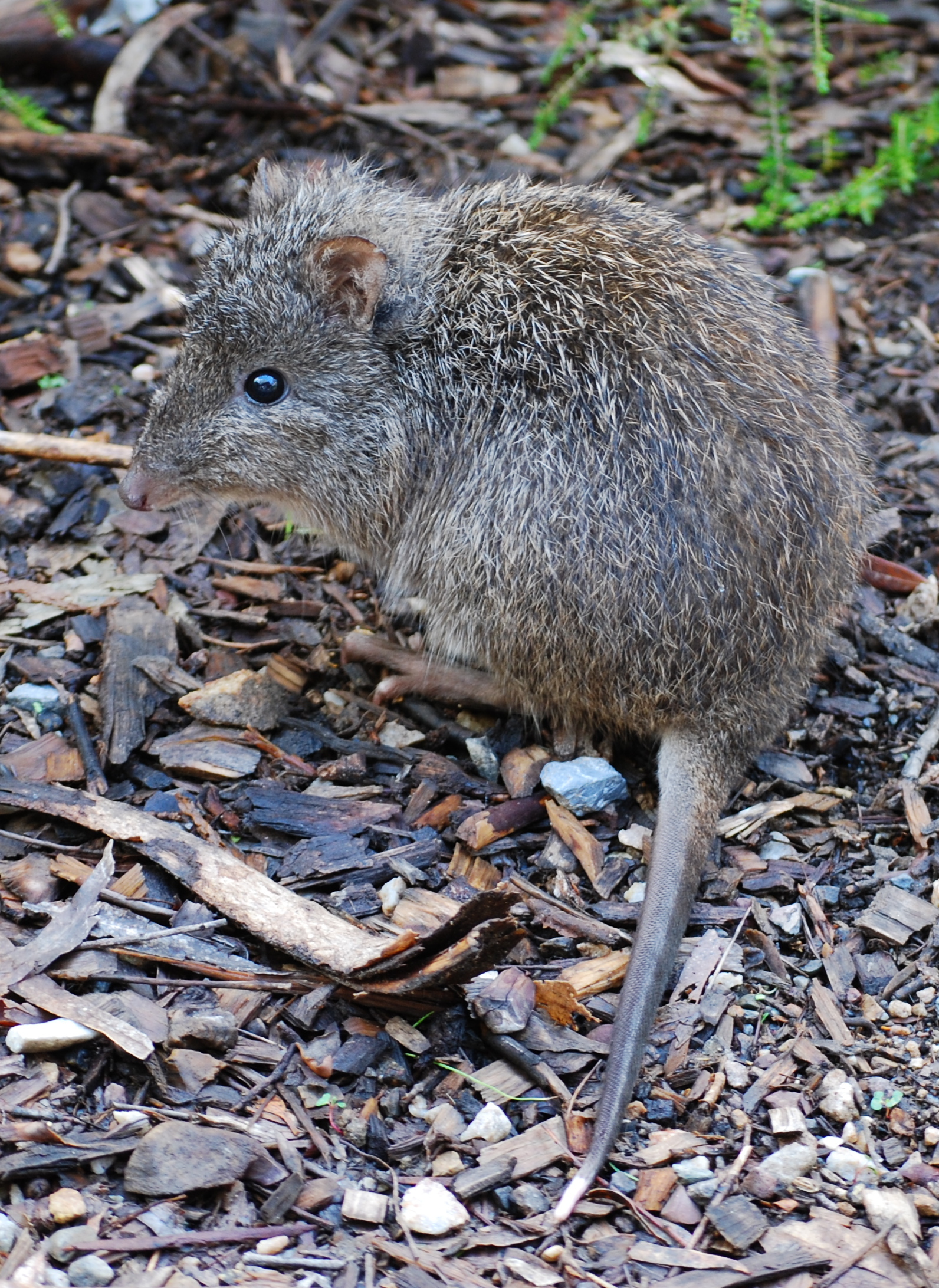Potoroidae family
Bettongs & potoroos
The potoroids are a group of small marsupials, closely related to kangaroos and wallabies (family Macropodidae) and rat-kangaroos (Hypsiprymnodontidae), that inhabit Australia and Tasmania.
Their diet is herbivorous, fungivorous and occasionally omnivorous, and some species eat almost exclusively fungi. They have a similar hopping gait to kangaroos and wallabies, although generally slower and less efficient. Some species also use their forelimbs to bound quadrupedally when moving at high speeds.
The oldest fossils of potoroids are considered late Oligocene in age (around 25 million years old), during which time Australia was mostly covered by rainforest. These fossils have been collected from the Riversleigh World Heritage Area in northwestern QLD and from Pwerte Marnte Marnte in southern NT, amongst other sites. The group was most diverse during the late Oligocene and early to mid-Miocene, but remained largely unchanged in their general size and lifestyle through to the modern era. That said, the largest known potoroid, Borungaboodie hatcheri from southwestern Australia, did not evolve until the Pleistocene epoch (2.6 million–12 thousand years ago).
Potoroos and bettongs are sad example of the effects of introduced predators and habitat clearing on Australian mammals. Although their fossil record shows many more, there are currently only eight living species, most of which are considered either threatened or endangered. Potorous gilbertii (ngilkat or Gilbert’s potoroo) is the most endangered marsupial in the world, and one of the rarest mammals. One species, Caloprymnus campestris (or desert rat-kangaroo, though in fact a type of bettong) went extinct as recently as the late 1930s. Before it died out, C. campestris inhabited the very driest, rockiest areas of eastern central Australia, showing how tough and adaptable this endearing group of small marsupials has been.
